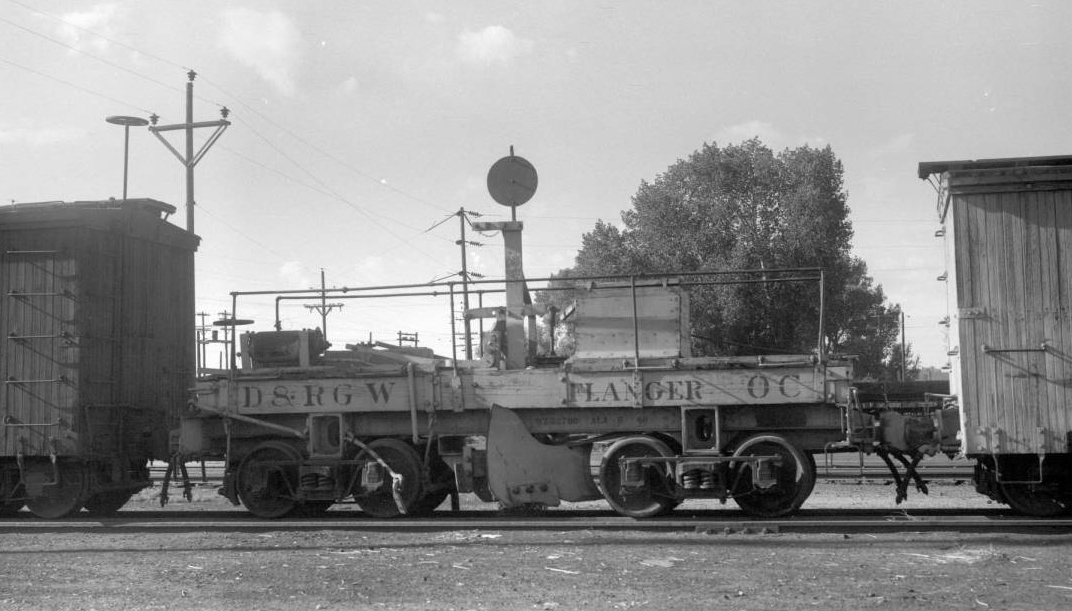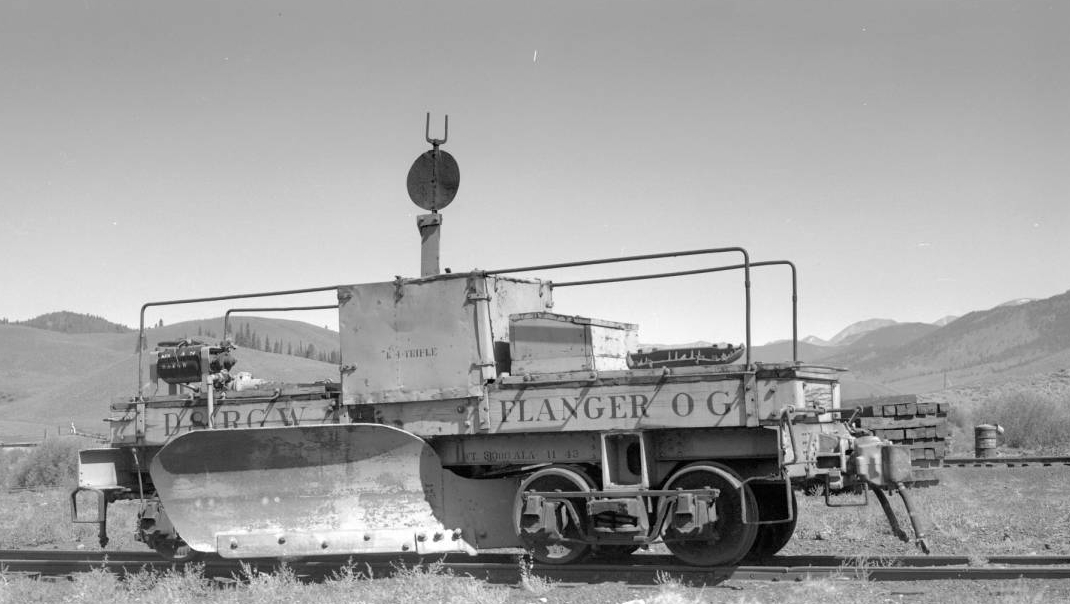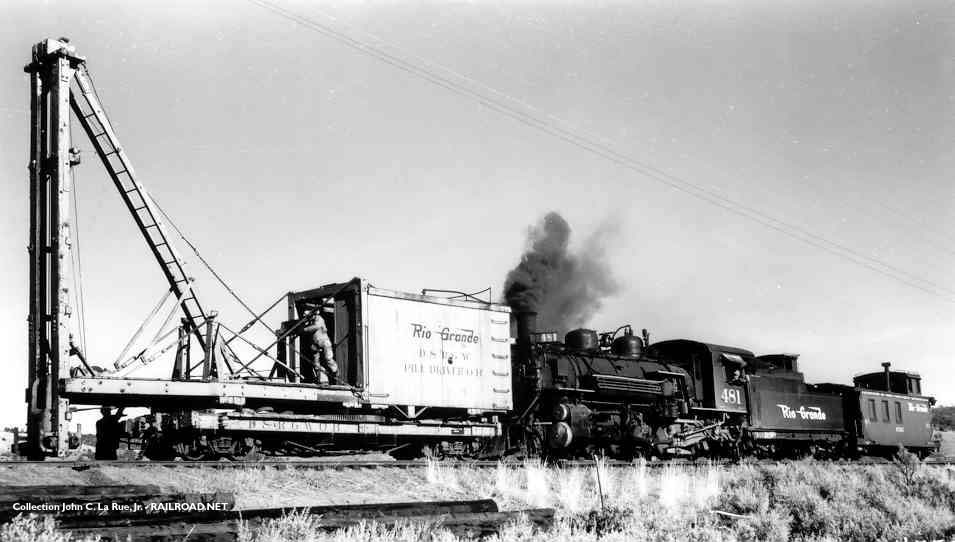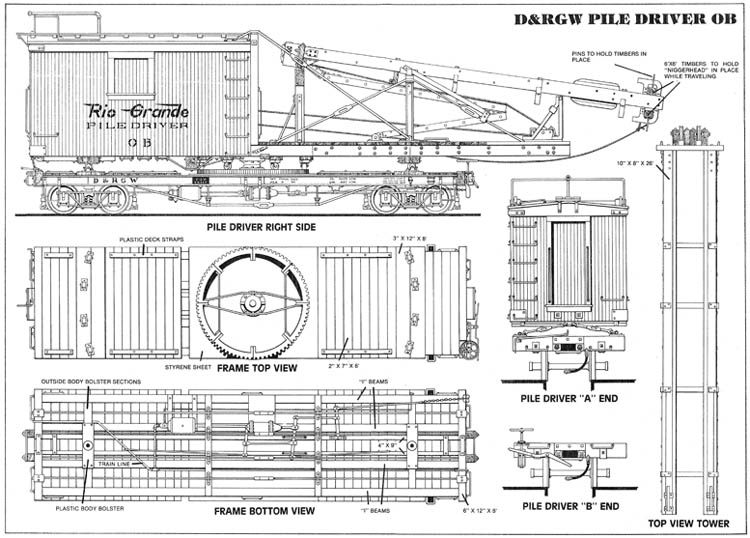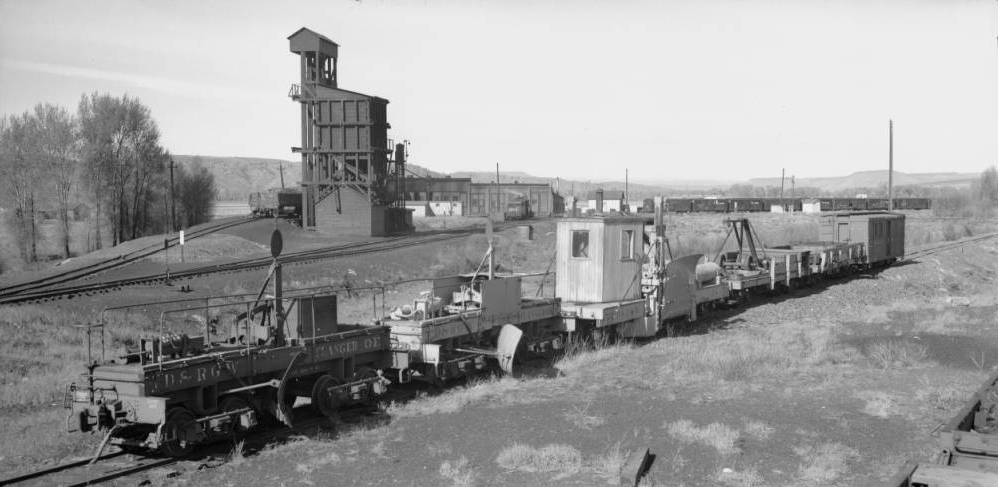The D&RGW narrow gauge maintenance-of-way (MOW) work equipment was important (representing several hundreds of cars of various types throughout the life of the company) and included very diverse pieces of rolling stock. Part of this equipment was made of old freight cars used as work cars after modifications (a lot of old boxcars in the 4000 series, flat cars and a few tank cars and tenders) and of decommissioned passenger cars converted to service cars. The Rio Grande MOW equipment also included purposely built special cars used for a specific task, such as the steam rotary snowplows, flangers, derrick cranes used for construction and wrecks clean up, ballast spreaders, railroad ditchers, pile driver, etc.
After 1907 these special cars were renumbered OA to OZ, following a new letter-based numbering scheme for the Denver & Rio Grande MOW equipment. The prefix letter O, for outfit, was replaced by a zero before the number of the freight cars transfered to non-revenue service, which therefore kept their original number preceded by a “0”. In general, the passenger and freight cars transfered to the MOW fleet kept their original livery, whereas the lettered equipment (OA – OZ) was painted boxcar red. Starting from the fourties, the D&RGW MOW equipment was progressively painted in a light grey livery with black lettering.
Some of the freight and passenger cars the Denver & Rio Grande Western used as MOW equipment survived today, mostly on the Cumbres & Toltec Scenic Railroad, where it is one of the highlights of the sizeable narrow gauge rolling stock collection of this living museum. Particularly two steam rotary snowplows, several flangers, a derrick, a Jordanspreader and various non-revenue work cars. Other D&RGW maintenance-of-way cars are preserved at the Colorado Railroad Museum.

